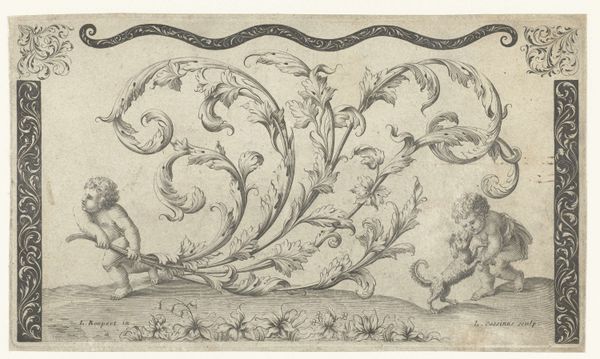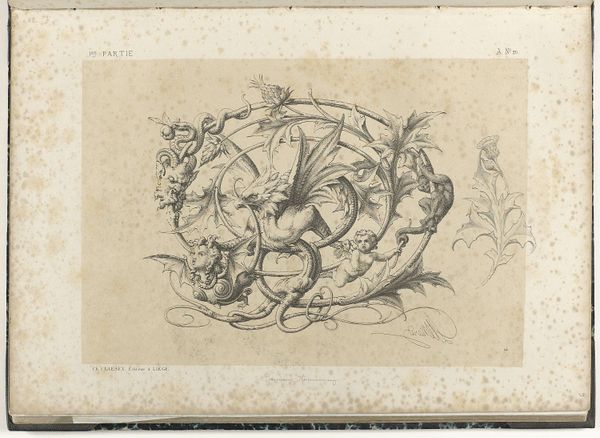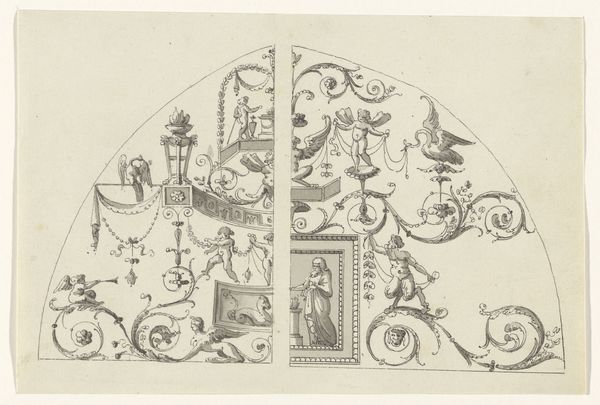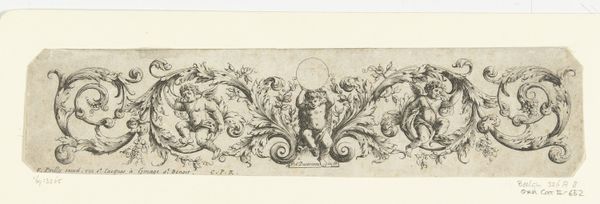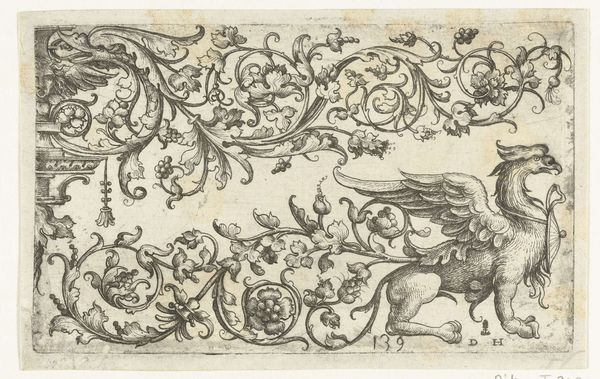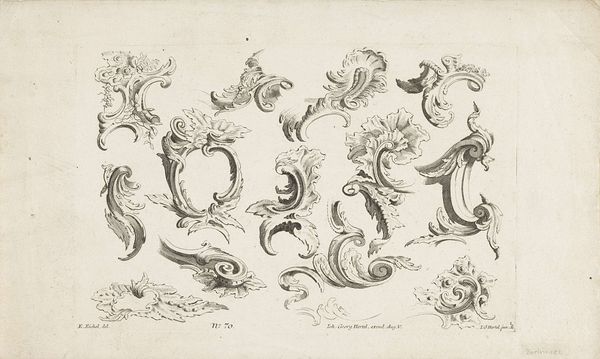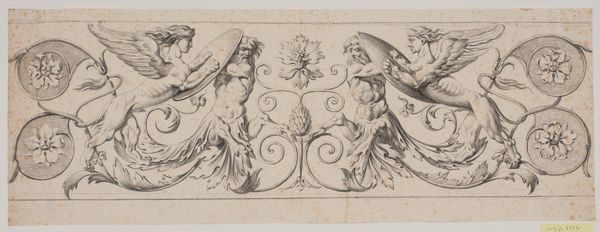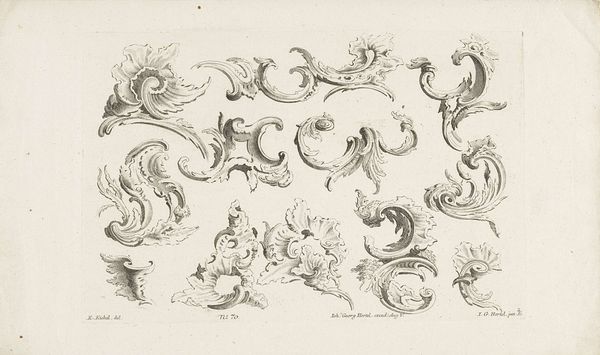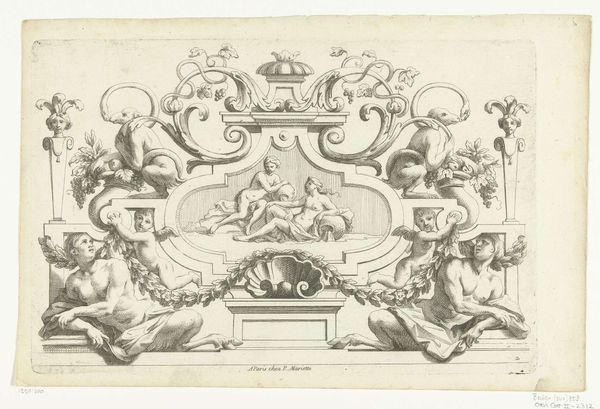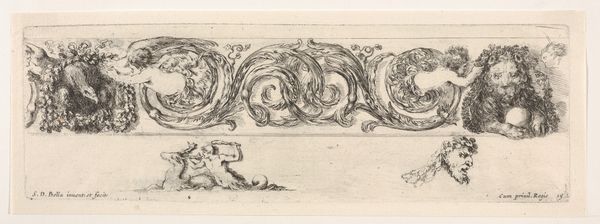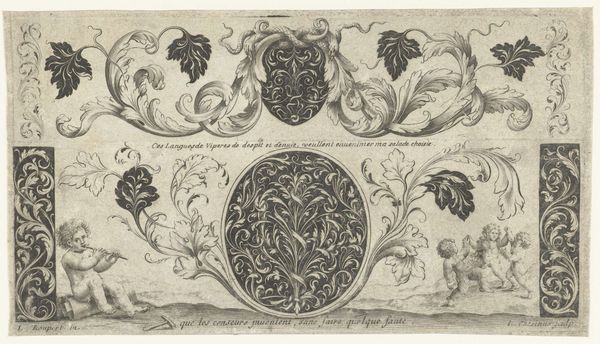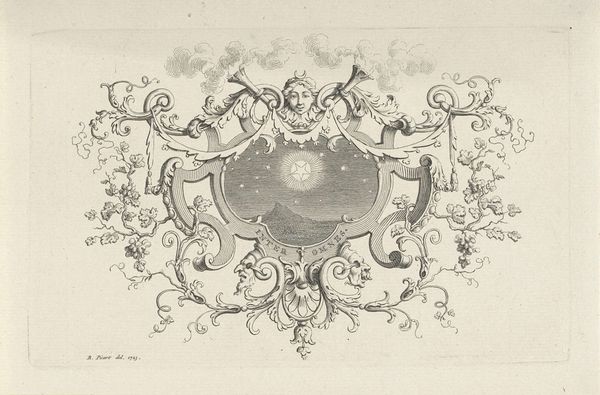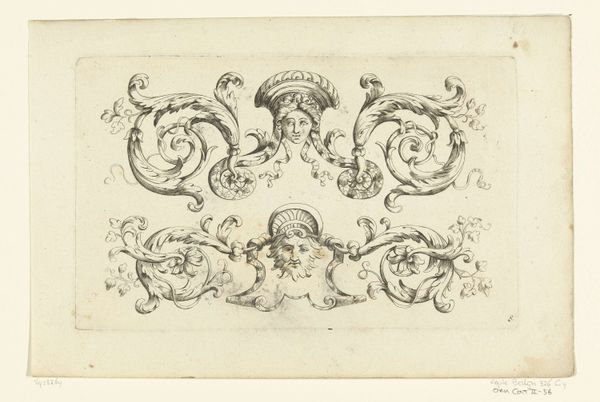
drawing, ink, pen
#
drawing
#
neoclacissism
#
allegory
#
pen drawing
#
pen illustration
#
pen sketch
#
old engraving style
#
ink
#
geometric
#
pen-ink sketch
#
pen
Dimensions: height 217 mm, width 292 mm
Copyright: Rijks Museum: Open Domain
Editor: This is "Arabesken met medaillons," created around 1810 by Laurent Guyot. It’s a pen and ink drawing currently housed at the Rijksmuseum. It reminds me of something you might see decorating a Roman building, very formal and balanced. What jumps out at you when you look at this drawing? Curator: It's interesting you say that, because it perfectly embodies the Neoclassical movement’s fascination with antiquity. Notice how Guyot employs allegorical figures and symbols popular during the Neoclassical period. Can you see how the central medallion, flanked by winged figures, evokes classical friezes? Editor: Yes, the medallion reminds me of Roman cameos. And there's the head of Mercury too! What would these have represented to viewers at the time? Curator: The inclusion of Mercury is no accident; he's a figure of commerce, communication, and transition. This use of symbolic language links directly to shared cultural memory. Ask yourself, what message does this constellation of symbols convey about power and progress in early 19th-century Europe? Editor: So, it's more than just decoration; it's a statement. The lions also make me think about strength and empire. Curator: Exactly. These weren't arbitrary choices. Guyot intentionally uses iconography to create layers of meaning that spoke volumes to the informed viewer. Do you think we still interpret these symbols in the same way? Editor: I'm not sure we always get the full picture. Knowing the context definitely adds depth to how I see it now. Curator: Indeed. Visual symbols shift, accrue, or shed meaning across time. Understanding the original context illuminates how those meanings have evolved. Editor: I see this artwork in a completely new way now, as a complex expression of its era, rather than a simple design. Thank you!
Comments
No comments
Be the first to comment and join the conversation on the ultimate creative platform.
